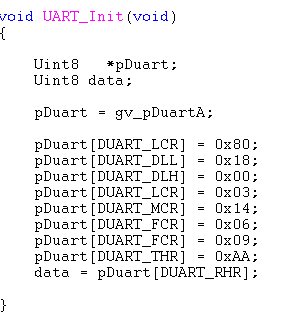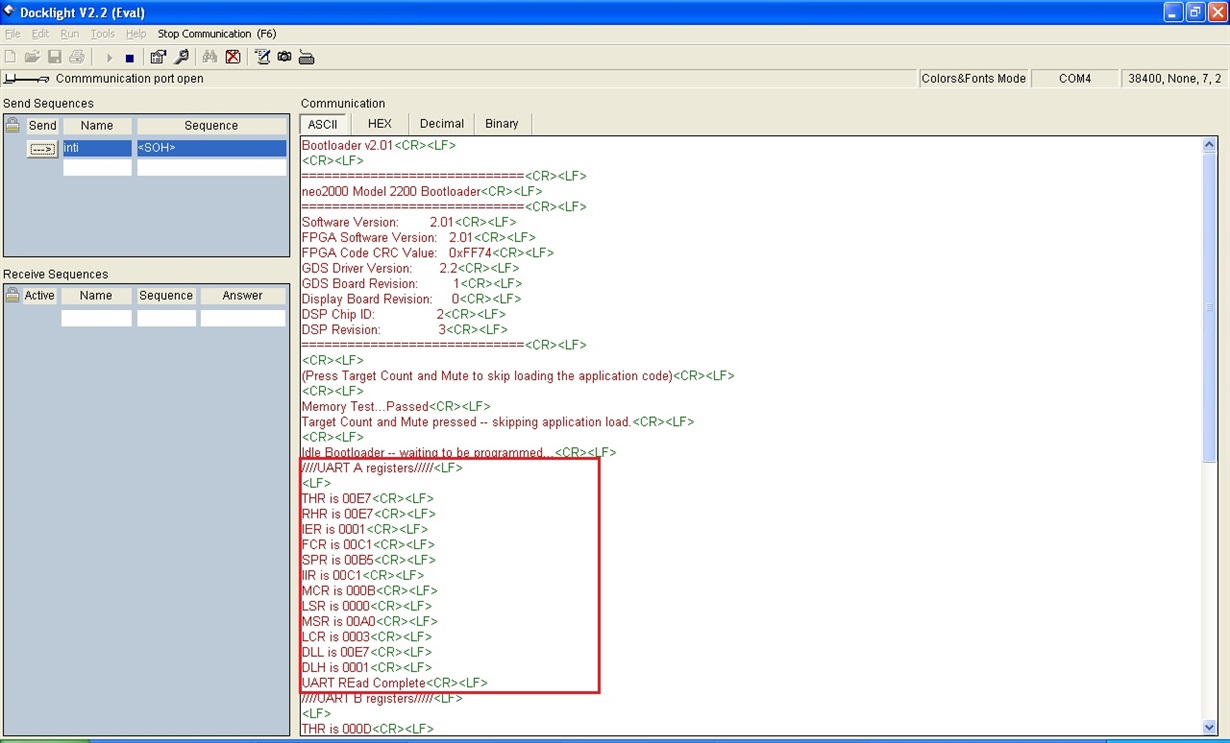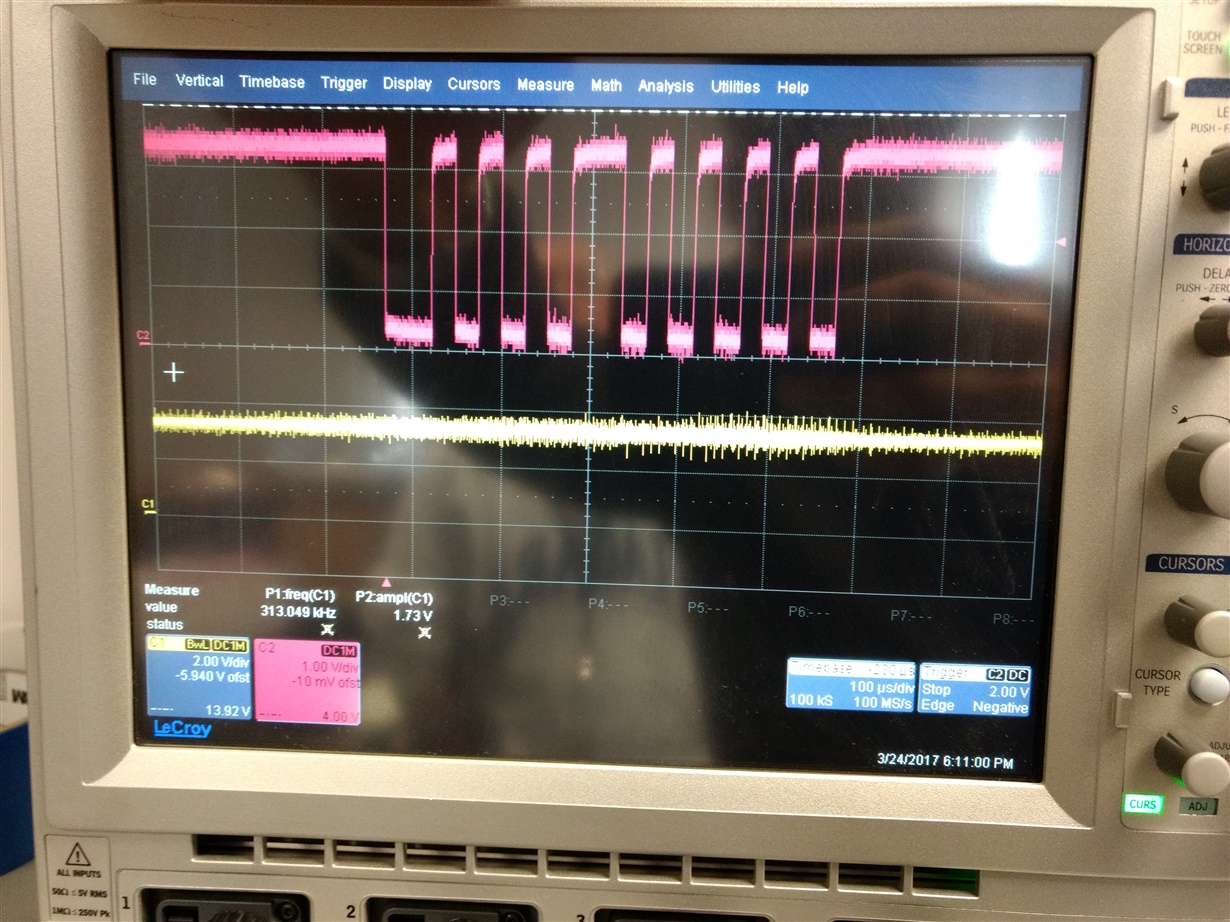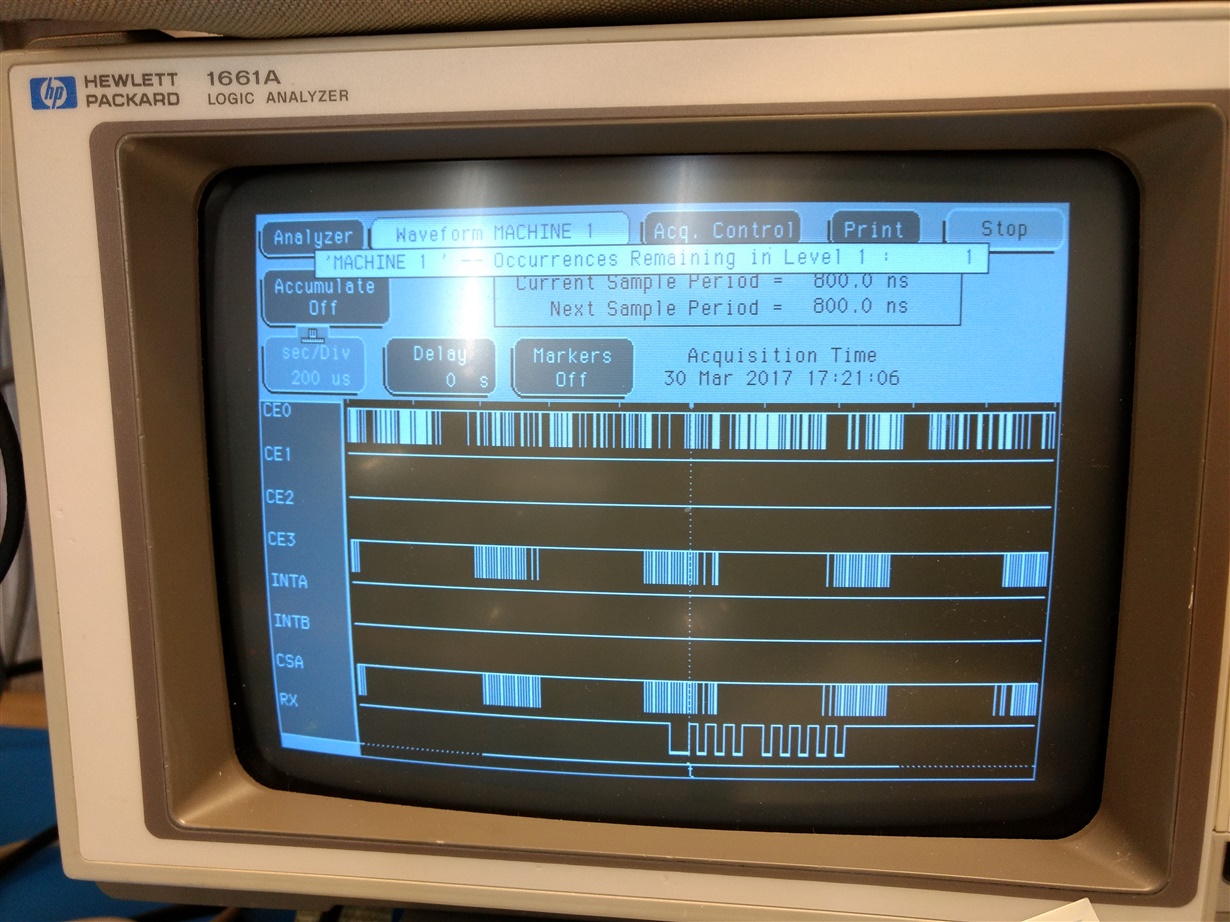Hello TI team,
TL16C752C DUART A has been mapped with C6711 DSP and DUART chip has been configured for 38400 baud rate, 1 stop bit, parity as None. It has also been configured in FIFO mode. I am transmitting some dummy data from PC to test the communication. LSR register is updating that DUART has received some data in its Rx Buffer but RHR register is always providing the data as 0 (decimal).
We have tracked Chip select pin for UART A with oscilloscope also and it is working fine.
Another update is that - This is the legacy system and previously we were using TL16C752B part and code is working well for this part.
Please update at the earliest.
Regards,








